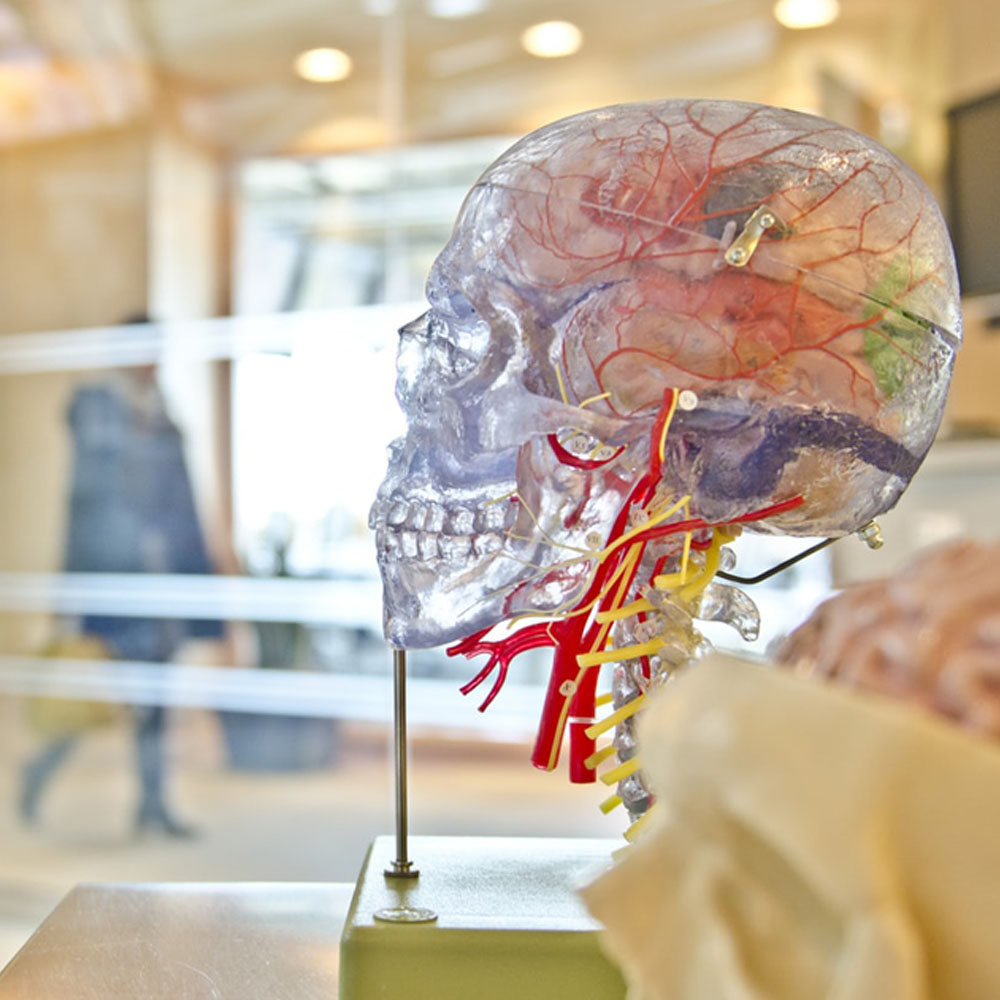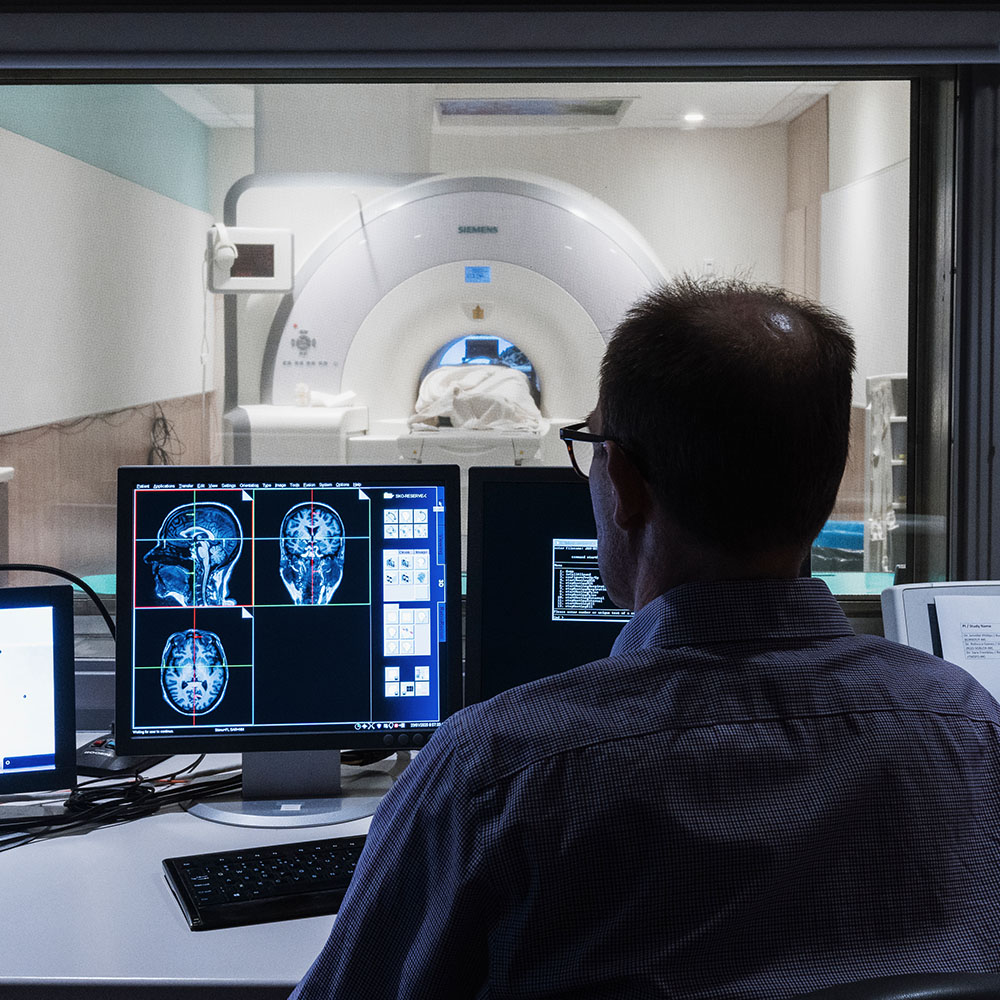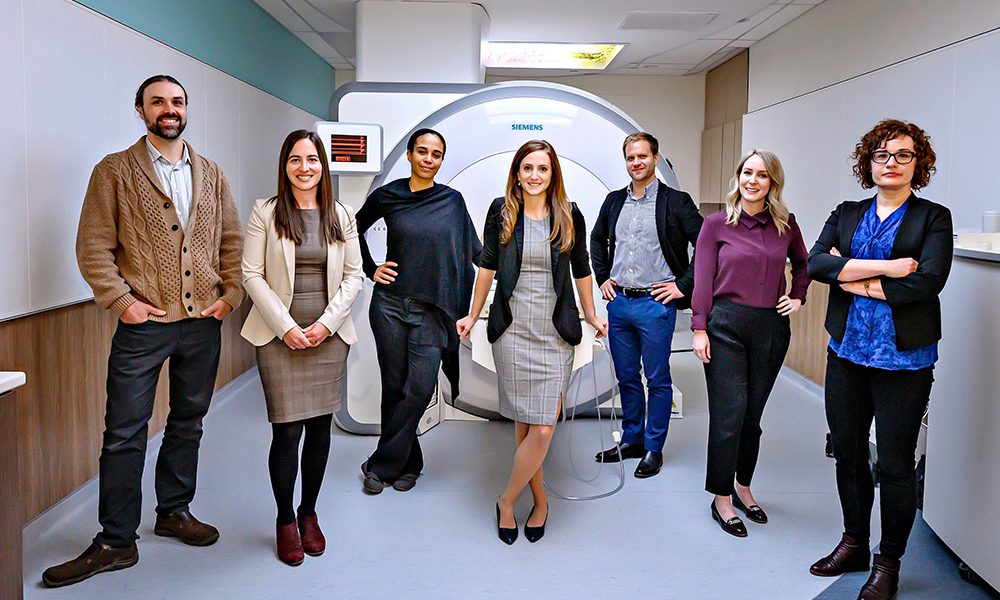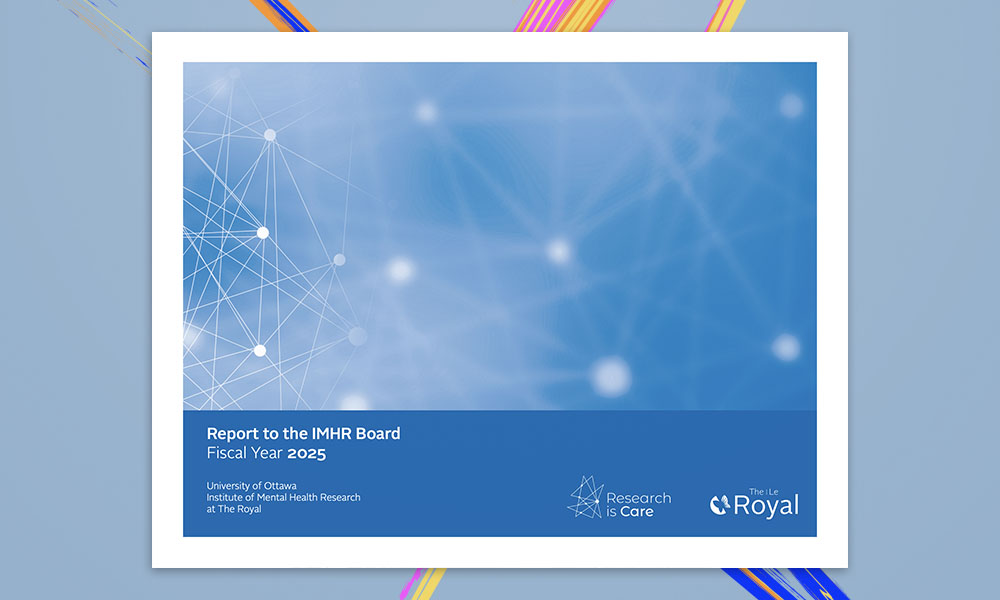The Royal’s 2025 strategic plan highlights the importance that research plays in our vision for the future. Research at The Royal is driven by the University of Ottawa Institute of Mental Health Research (IMHR) and brings together a team of more than 60 researchers working together in interdisciplinary teams to develop and improve evidence-based prevention, diagnostics and treatment for people living with mental illness.
At The Royal, research is care. By involving patients in our research, we create capacity in the system, empower patients to be involved in their care, thereby shortening the distance between discovery and treatment.
Guided by our Strategic Research Plan, launched in 2024, we have prioritized five areas of focus, while also advancing cross-cutting research in sleep, cognition, suicide prevention and the impact of culture and gender on mental illness and addiction.


The hub of our research is our Brain Imaging Centre, where we house the only positron emission tomography-magnetic resonance imaging (PET/MRI) scanner in Canada devoted to brain research and mental illness. We are currently developing our capabilities to conduct simultaneous tri-modal imaging, which adds electroencephalogram (EEG) to the mix, the only facility in Canada to have such a sophisticated view of the brain. Such imaging will help us unlock the complex biochemical, structural and functional changes associated with mental illness. This rare and technically advanced platform will allow researchers to simultaneously capture a more thorough and integrated picture of the brain, laying the groundwork for improved diagnostics and personalized treatments.
The Brain Imaging Centre is part of our Clinical Brain Research Centre, which is also home to the BMO Innovative Clinic for Depression, Neuromodulation Research Clinic, Sleep Research Clinic, Music and Mental Health Research Clinic and Cognitive Health Research Clinic.

Our researchers specialize in complex and treatment-resistant mental illness, and conduct innovative work that is leading to the development of more personalized and alternative treatment options, to help improve patient care locally and globally.


Our annual report provides an in-depth look at how we are delivering on our research priorities and the partners that help us make it happen.
Partnership is central to research at The Royal. We work with community organizations, peer researchers and hospitals, businesses and universities across the Ottawa region and around the world to bring broad experience, perspectives and skills together in pursuit of discoveries from prevention to diagnosis to treatment for people living with mental illness.
1145 Carling Ave.,
Ottawa, ON K1Z 7K4
(613) 722-6521
1141 Carling Ave.,
Ottawa, ON K1Z 7K4
(613) 722-6521
1804 Highway 2 E, P.O. Box 1050,
Brockville, ON K6V 5W7
(613) 345-1461
2121 Carling Ave.,
Ottawa, ON K2A 1H2
(613) 722-6521
We use cookies to improve your experience on our website. To learn more, read our privacy policy.